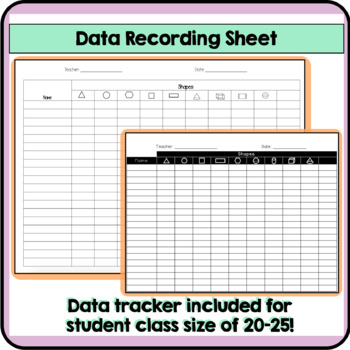Kindergarten | Pre-K 2D & 3D Identifying Shapes Assessment Data Recording Sheet
- PDF
Description
This quick prep shape assessment tool makes it easy to assess your students' knowledge of shapes. With just a few printed sheets of paper you can have a simple and effective shape assessment. Use the master page with a cover sheet to reveal shapes, or flip through the flashcards, having the student identify as you go. The flashcards allow you to turn the shapes and therefore assess students' knowledge of shapes in different orientations. A recording sheet is included for you to easily keep track of your students' progress.
Included:
Shape Identifying Sheet with 2D and 3D Shapes
2D Shape Flashcards (circle, rectangle, triangle, square, hexagon)
3D Shape Flashcards (sphere, cylinder, cube. cone)
Class Data Tracker (for up to 20 students)
Class Data Tracker (for up to 25 students)
Thank you for your interest in this resource! Follow my store for more great products and check out my webpage for activities, and teacher-author tips and tricks!
You may also like:





